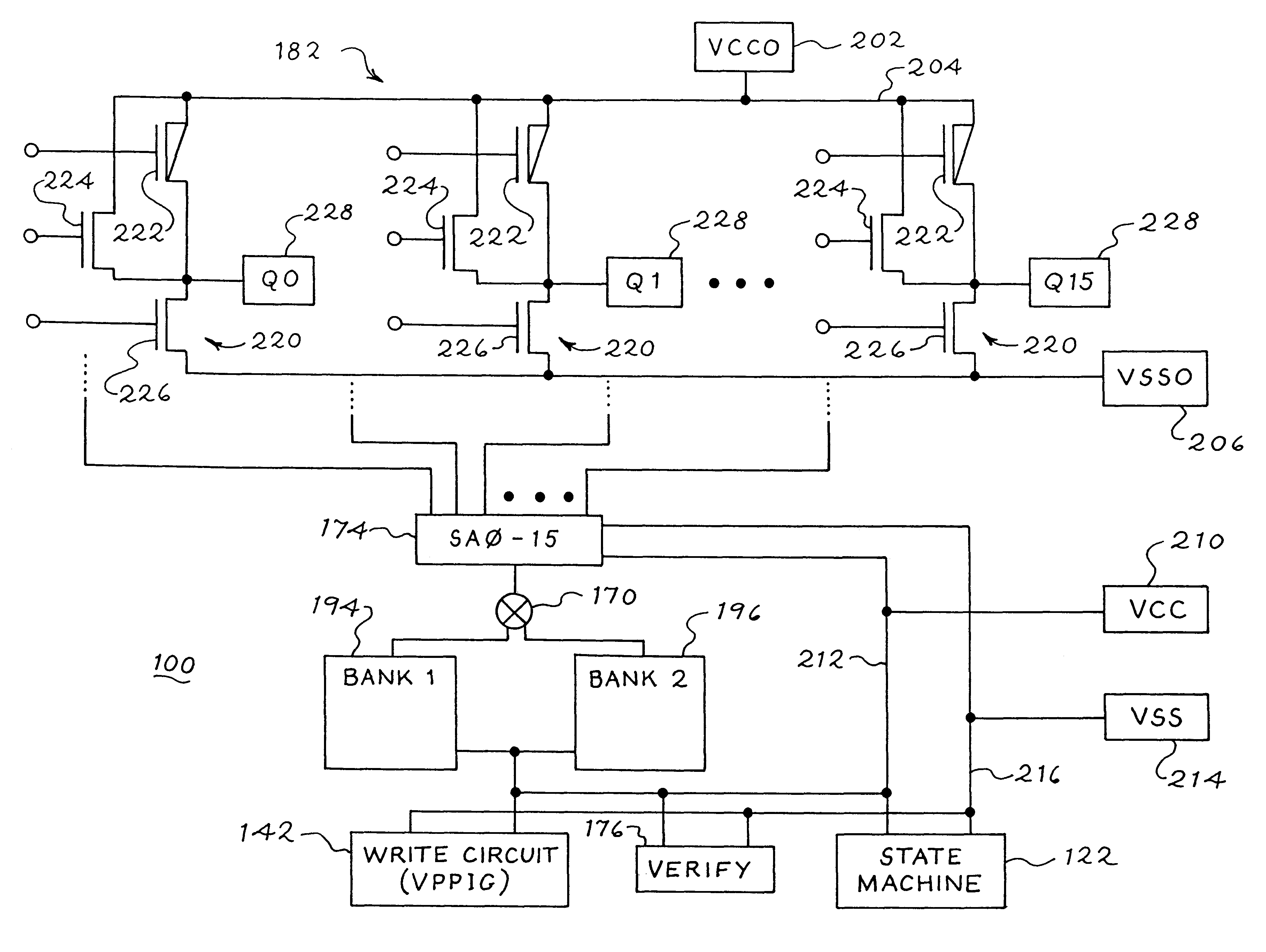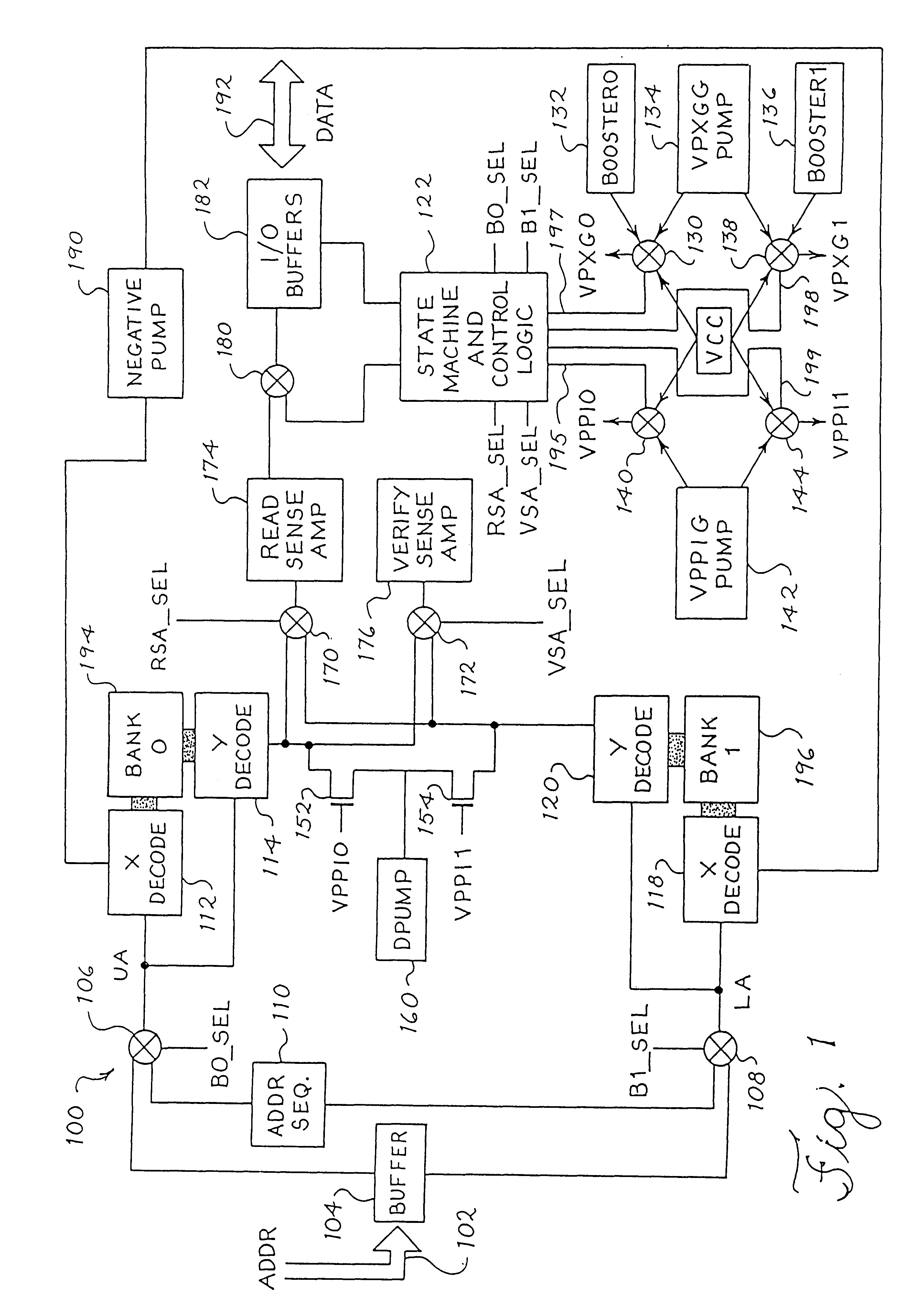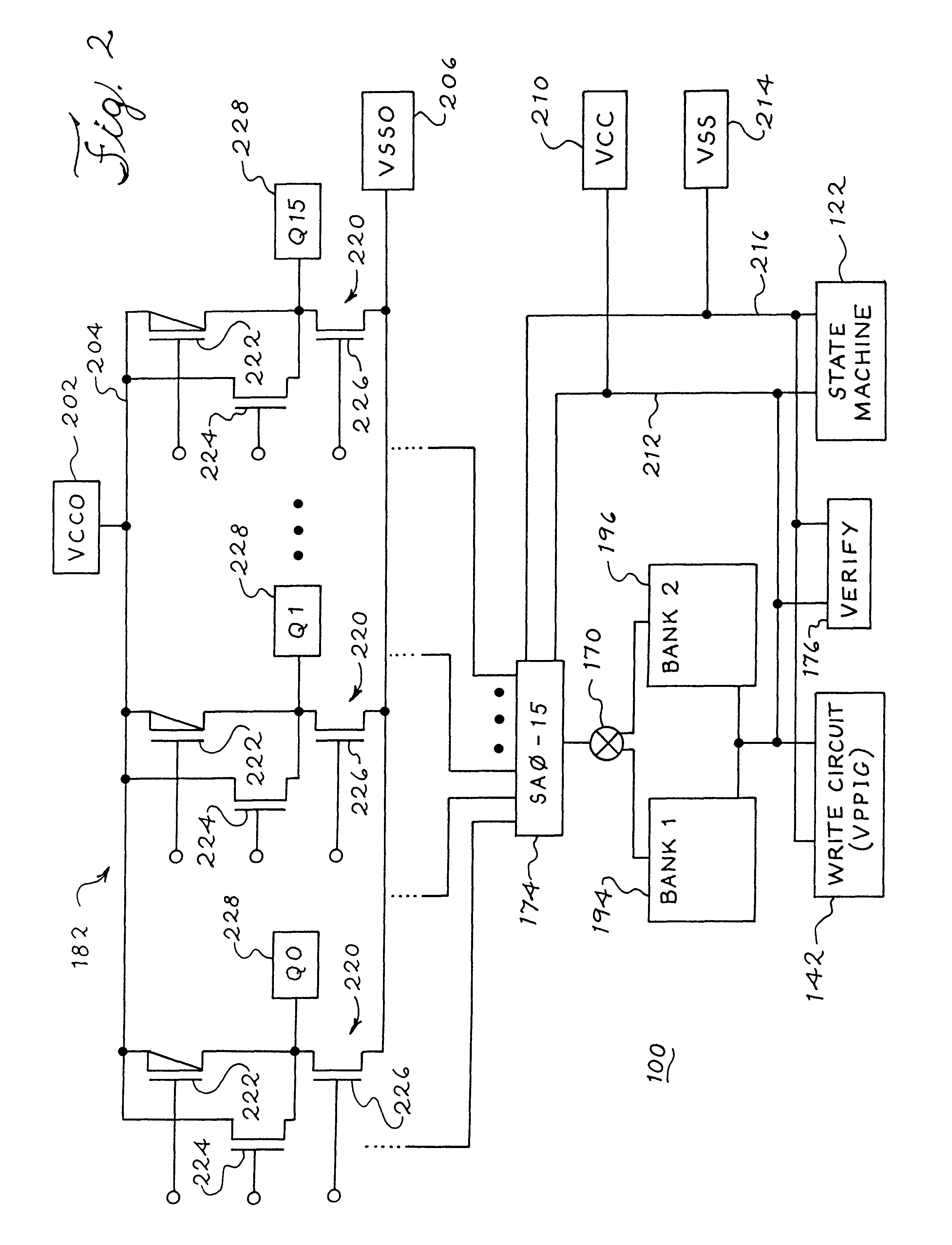Separate output power supply to reduce output noise for a simultaneous operation
- Summary
- Abstract
- Description
- Claims
- Application Information
AI Technical Summary
Benefits of technology
Problems solved by technology
Method used
Image
Examples
Embodiment Construction
Herein, the phrase "coupled with" is defined to mean directly connected to or indirectly connected with through one or more intermediate components. Referring now to the Figures and in particular, FIG. 1, there is schematically shown a flash memory device 100 according to the present invention that provides for reading while simultaneously undergoing a program or erase operation. The memory device 100 according to the present invention may include one or more components of the memory devices disclosed in U.S. Pat. No. 5,867,430 entitled "BANK ARCHITECTURE FOR A NON-VOLATILE MEMORY ENABLING SIMULTANEOUS READING AND WRITING," to Chen et al and U.S. Pat. No. 5,847,998 entitled "NON-VOLATILE MEMORY ARRAY THAT ENABLES SIMULTANEOUS READ AND WRITE OPERATIONS," to Van Buskirk, both of which are herein incorporated by reference and further describe the implementation and operation of a device of this type. The memory device 100 may also include one or more components of such exemplary flash ...
PUM
 Login to View More
Login to View More Abstract
Description
Claims
Application Information
 Login to View More
Login to View More - Generate Ideas
- Intellectual Property
- Life Sciences
- Materials
- Tech Scout
- Unparalleled Data Quality
- Higher Quality Content
- 60% Fewer Hallucinations
Browse by: Latest US Patents, China's latest patents, Technical Efficacy Thesaurus, Application Domain, Technology Topic, Popular Technical Reports.
© 2025 PatSnap. All rights reserved.Legal|Privacy policy|Modern Slavery Act Transparency Statement|Sitemap|About US| Contact US: help@patsnap.com



